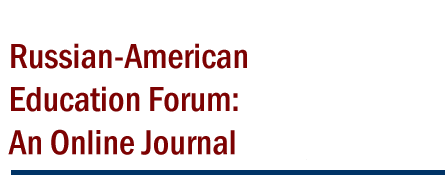
Computer-based presentation of learning materials: teaching techniques
Implementation of third generation educational standards for Russian colleges and universities is currently changing the class/self study ration towards increased emphasis on self-study. Recommended academic workload in class is 23-25 hours (undergraduate school) and 18-20 hours (graduate school)1. Among the key measures to intensify students’ self study activity are optimization of teaching methods and IT application. Up-to-date teaching and learning courses must be, at least partially, in digital form and contain links to online resources. Computer-based learning resources may be used both for class activity and self study either in computer labs or via distant access. New educational process requirements generate new ways of student-teacher interaction. While a traditional lecture or workshop allowed real time correction of class based on the students’ reaction, computer-based courses imply delayed feedback and hence adjustment of teaching methods. That is why development of digital educational resources demands that the teacher should not only demonstrate computer proficiency but apply his or her own didactic (teaching) experience to work out new teaching methods, but also analyze the practice of other colleagues who are using IT in their professional activity.




